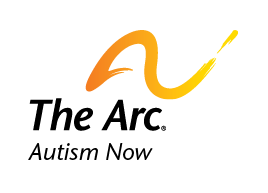Contents
Autism Defined
Autism spectrum disorders describe a range of neurodevelopmental disorders that significantly impact communication and social skills and are evidenced by restricted, repetitive patterns of behavior, interests or activities. The definition of autism spectrum disorders is evolving and is seen differently depending on who is explaining autism spectrum disorders. The federal definition used for special education states that an autism spectrum disorder is a developmental disability that significantly affects verbal and nonverbal communication as well as social interaction. Autism spectrum disorders are usually diagnosed by age three; however, many individuals go undiagnosed until later in life.
Some signs of autism spectrum disorders in a child or adult may include:
- lack of interest in playing with other children
- little or no eye contact
- delays in learning to speak
- challenges in adapting when a routine changes
- fixation on an activity or object
- misreading nonverbal interactions
- trouble relating to others
- repetition of words or phrases (echolalia)
- difficulty building friendships appropriate to their age
Other Definitions
Medical and other professionals diagnose autism spectrum disorders by referring to the definitions outlined in the Diagnostic and Statistical Manual of Mental Disorders. Released in May 2013, the fifth and most recent edition of the Diagnostic and Statistical Manual (DSM-5) contains important revisions to the definition.
While DSM-IV lists autism, Asperger’s Disorder, childhood disintegrative disorder, Rett’s disorder and pervasive developmental disorder as separate disorders, the Diagnostic Statistical Manual-5 has a new category called Autism Spectrum Disorders. This category includes autism or autistic disorder, Asperger’s disorder, childhood disintegrative disorder, and pervasive developmental disorder not otherwise specified. Using this spectrum disorder model emphasizes that symptoms of a child or an adult with ASD falls on a continuum. This spectrum will allow clinicians to account for the variations in symptoms and behaviors from person to person.
The Autistic Self Advocacy Network sees an autism spectrum disorder as a neurological variation where a person or child may have different sensory experiences such as more sensitivity to light and sound, may have a need for consistency in daily life, and may have difficulty with the social cues of language such as reading facial expressions.
The Autism Society of America defines an autism spectrum disorder as a complex developmental disorder that impacts children and adults in a variety of ways in their ability to be social and communicate with others.
Prevalence Statistics
The Center for Disease Control complied statistics on prevalence of autism in a report that was published in 2014. They found that one in 68 people and one in 42 boys have an autism spectrum disorder. Whatever group is defining autism spectrum disorders, there is agreement from persons with autism spectrum disorder, their families and advocates that every child and adult is able to have a life that is built on self-determination, independence and inclusion in the community.
References
- American Psychiatric Association, Autism Spectrum Disorder, 2013. Retrieved on August 26, 2013.
- Autistic Self Advocacy Network. Retrieved on March 17, 2011.
- Autism Society of America. Retrieved on March 17, 2011.
- Department of Health and Human Services, Centers for Disease Control and Prevention. Diagnostic Criteria for 299.00 Autistic Disorder, 299.80 Asperger’s Disorder, Pervasive Developmental Disorder, Rett’s Disorder, and Childhood Disintegrative Disorder. In the American Psychiatric Association’s Diagnostic and Statistical Manual-IV, Text Revision (DSM-IV-TR). Retrieved on March 15, 2010.
- Department of Health and Human Services, Centers for Disease Control and Prevention. Morbidity and Mortality Weekly Report, 2012. Prevalence of Autism Spectrum Disorders – Autism and Developmental Disabilities Monitoring Network, United States, 2008.
- Department of Health and Human Services, National Institutes of Health. Autism Spectrum Disorders (Pervasive Developmental Disorders). Retrieved on March 17, 2011.
- National Autism Center (2009). The National Standards Project—Addressing the need for evidence-based practice guidelines for autism spectrum disorders. Randolph, Massachusetts.
- Pasco, G. (2010). Identification and Diagnosis of Autism Spectrum Disorders; An Update. Pediatric Health. 4(1): 107-114. Retrieved on March 15, 2011.
- U.S. Government Printing Office via GPO Access, revised as of July 1, 2010. Code of Federal Regulations, Title 34, Volume 2, pp 12-13, Section 300.8 Child with a Disability.
